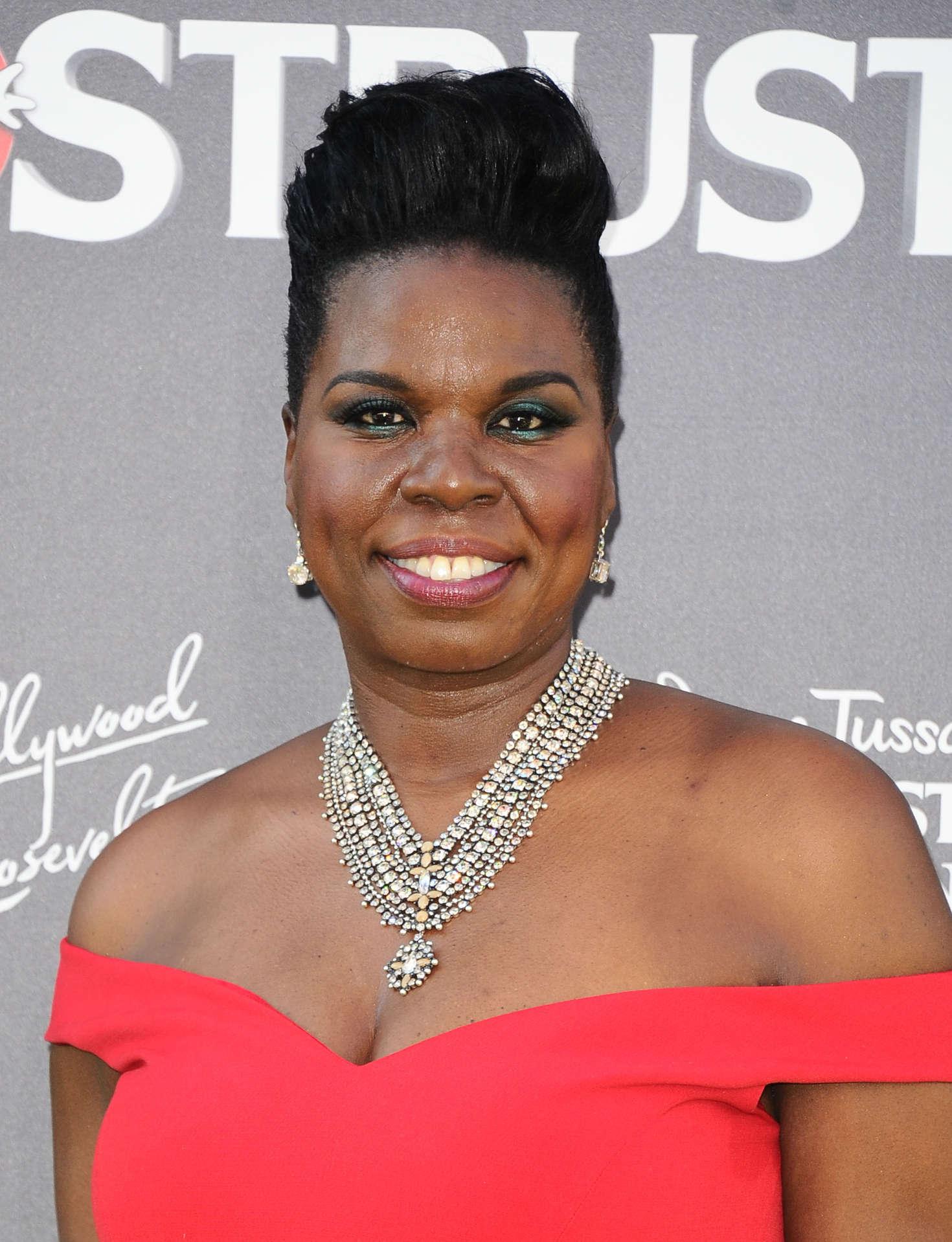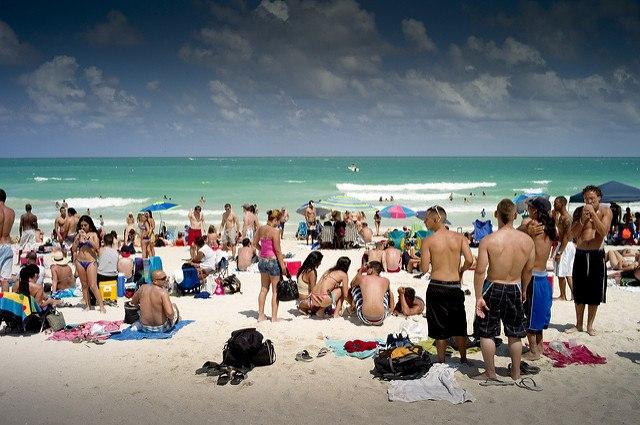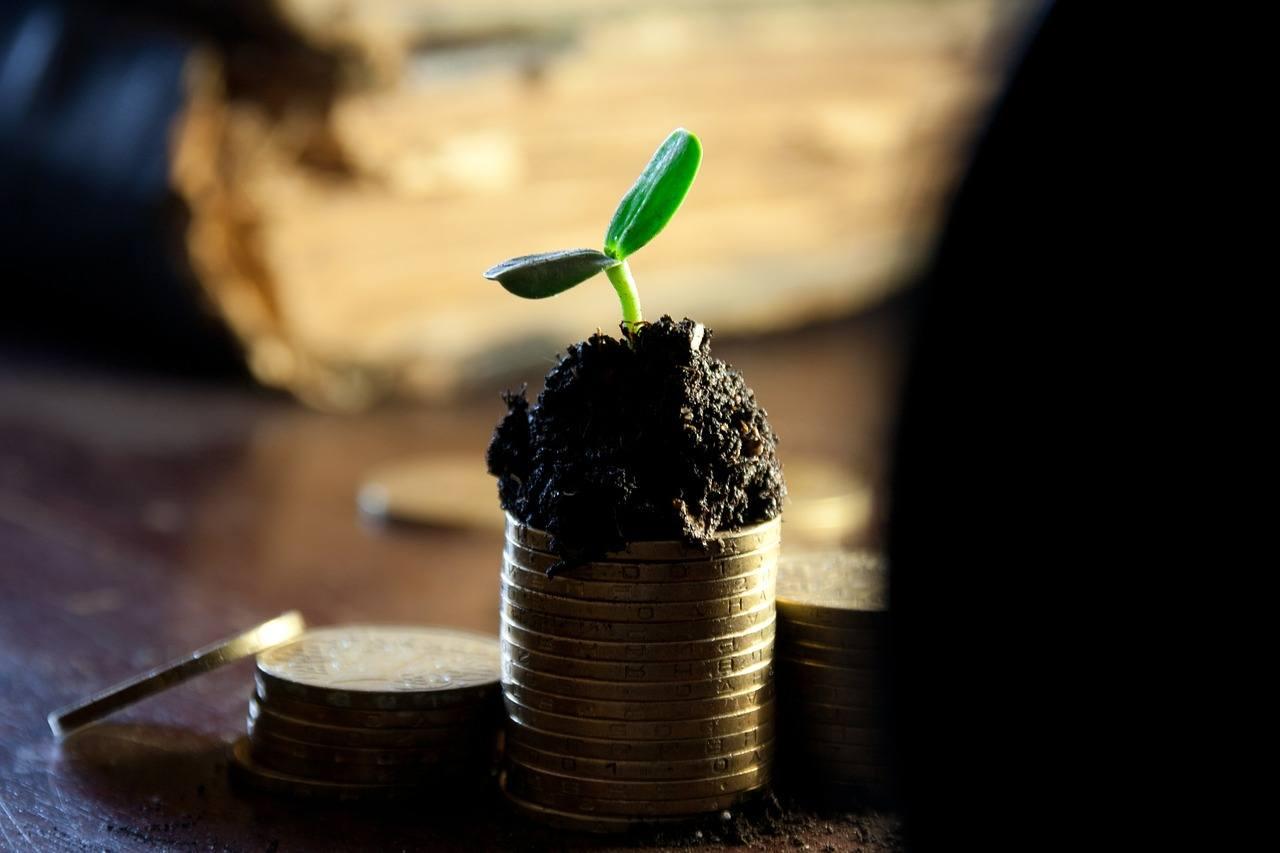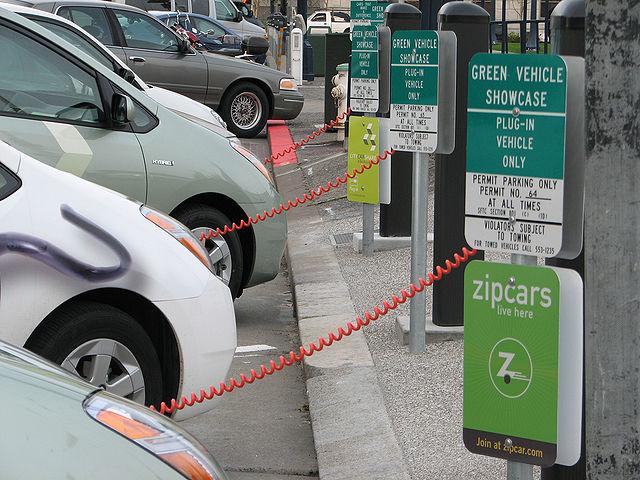The First Amendment is a Check on Government, Not a Cover for Trolls


Anyone involved in the world of media is going to be trolled once in a while. We get our share here at TriplePundit. I’ve been subjected to plenty of trolling, the vast majority of which is from anonymous Twitter handles or emails. In general, getting trolled is like being nibbled by a goldfish; it is not really worth the bother. The uglier emails to me, however, sometimes score my version of a virtual hit-and-run, as I will respond with a Susie Green-like rant and then a click on the spam button to end the conversation. After all, I learned long ago that when faced with a bully, bully them back, and hit back hard.
But at times the level of trolling reaches a disturbing tone, as in over the past week when "Ghostbusters" star Leslie Jones became the target of relentless, racist and psychopathic taunts.
Apparently all Jones did was challenge society’s notion of how beauty should be defined, simply by existing and not being a size zero. Even worse, she took part in a remake of a 1980s hit movie that this time around showcases an all-female cast.
At first, Twitter remained silent while the trolling snowballed. On Monday, Jones finally had enough and deleted her account. As the outcry from her supporters and anyone who has been harassed on social media amplified, Twitter issued a tepid statement. And, in a move that many said took way too long, the company permanently banned Milo Yiannopoulos, tech editor of the conservative site Breitbart News.
It all started when Yiannopoulos wrote a derisive review of "Ghostbusters" on Monday, and asked readers to tweet Jones pictures of apes, which Jones says sparked an avalanche of racist and misogynist tweets. Plenty of users piled on Jones, and even hacked her account to send hateful and homophobic tweets in her name. The episode was an embarrassment for Twitter, which in recent years has seen its user growth plateau while failing to make a profit for its investors.
Yiannopoulos’ predictable reaction to the ban circulated widely throughout the media as he forecasted the eventual demise of Twitter during an interview with the New York Times:
“This is the beginning of the end for Twitter. Some people are going to find this perfectly acceptable . . . Anyone who believes in free speech or is a conservative certainly will not,” Milo Yiannopoulos of Breitbart News told the New York Times.
The problem with Yiannopoulos’ rant is that in much of our daily discourse, speech and expression are privileges, not something “free” that is an absolute right. The First Amendment prohibits the government (explicitly Congress) from placing any restrictions on the press. But private companies, including media companies – a description that arguably fits Twitter -- can control speech however what they want.
That is why a restaurant can have a dress code. It does so not to impinge on your freedom of expression, but because it needs to make money and risks losing business if its workers and customers have to look at you shirtless. A bar has the right to kick you out if you are saying something abusive to its patrons, whether you are racist, sexist or, at a minimum, just being a jerk.
Sure, at a fundamental level you can say what you want, wherever you want. But you then risk consequences, whether you are forbidden from entering an establishment, get fired from your job or, in the case of a public figure, lose your media platform.
Nevertheless, most folks who spew such invective do not have the social skills or guts to behave that way in public, so they retreat to tools such as Twitter. Other users who are public, such as Yiannopoulos, feel inspired by the size and passion of their followers, so they feel emboldened -- and entitled -- to tweet whatever they want.
And Twitter -- which let us remember is a business, not an entitlement program allowing us to share our views -- has the right to suspend users the company believes is spewing hate and vitriol.
Maybe it is true that the company was careful and calculated in the case of Yiannopoulos, because in the end Twitter realized it could lose far more users over the fallout than gain from the ongoing controversy. But again, it is Twitter’s privilege to decide how it wants to enforce its terms and conditions. Whether we frequent a local hangout or a virtual marketplace of ideas such as Twitter, the only right to which we are entitled is the opportunity to participate. If your mouth (or smartphone) shows you are not up to the task of being civil toward others, then your privileges, status and reputation are shot. And such an outcome is all on you, not society.
Image credit: Ljmorris21/WikiCommons
Small Group Tours are Transforming the Travel Industry


Where will you travel on your next holiday? How will you get there?
Numerous studies indicate that international tourists are asking for more responsible traveling experiences. Specifically, a 2012 report by The Travel Foundation and Forum for the Future found that 75 percent of consumers desired a more responsible holiday, and 66 percent wanted to identify a ‘greener’ holiday more easily. The industry has responded with its proof of efforts to ‘greenify’ operations. Certifications, mission statements, and accolades galore don the walls and websites of popular hotels, resorts, cruise ships, restaurants and tour operators across the world.
Still, the reality remains that the majority of this year’s 1 billion international travelers will join the herds of other tourists who overwhelm popular destinations during peak vacation seasons. Referred to as mass tourism, this dominant form of travel fails to engage healthily with communities, but instead strains local resources and withholds economic benefit from local economies.
Introducing an alternative
Meanwhile, a quickly emerging market of small, specialized group tour operators offer a more sustainable, social, affordable and ultimately transformative experience for the traveler. Described using niche categories such as adventure travel, ecotourism or ethno-tourism, such tour operators limit potential for environmental degradation and facilitate opportunities for travelers to engage more consciously with people and places they wouldn’t likely otherwise reach.
Take the Lando, for instance. Last month, global adventure travel leader, G Adventures introduced a state-of-the-art overland vehicle for its tour offerings across Africa. The overland fleet management team at G Africa custom-designed the vehicle to cater to the needs and preferences of travelers who want to get around the continent more comfortably, affordably and sustainably.
The Lando boasts a 250-liter (66 gallon) drinking water tank to reduce the use of single-use plastic bottles. It accommodates a maximum of 22 people per tour, which helps to reduce per-person carbon emissions compared to multiple private vehicles. The Lando’s greatest attribute is perhaps best summed up by Nadja Lingl, senior operations manager at G Africa: “Being able to travel region to region via overland vehicle and spend money locally can help travelers get up close and more personal with Africa’s diverse people, landscapes and wildlife and leave investment behind.”
Shrinking footprints
Rather than flood a community with throngs of tourists at one time, small groups inherently limit the pollution, damage to flora and fauna, and other ecological impacts. Several companies are also working toward tracking and counteracting the footprints of their travels. Intrepid Travel partners with Carbon Trade Exchange to carefully measure and offset the majority of emissions generated by transportation, accommodation and waste.
Small groups are also better suited to foster goodwill with locals and take great care not to disrupt social dynamics. “[Tribal groups especially] often feel that some tourists exploit them. It happens when they are being observed as if in a goldfish bowl," said Jonny Bealby, who runs Wild Frontiers. "They do not like it when tourists stay in a swanky hotel and drive in and do not talk to them, then get in their Jeeps and go back. That kind of thing happens a lot. But when it's small groups and the money goes directly to local people, then the benefits flow both ways."
Most responsible small group operators offer some form of pre-tour education to encourage passengers to be conscious of the impacts and impressions they leave on local people and environments. Such advice is usually based on the UNWTO Ethical Traveller Guidelines and includes tips such as “learn a few words of the local language” and “take nothing but pictures … but ask for permission first.”
Impact travel
Genuinely committed tour operators are not simply concerned with limiting adverse impacts. Increasingly, travel companies believe it is their responsibility to leverage tourism as a tool to create mutual value exchange by empowering the communities they visit. As a starting point, responsible overland tour operators will make an effort to support the local economy by spending money at locally-owned restaurants and accommodations, where possible. Additionally, they will look to hire local guides at fair rates.
Several leading companies have even launched foundations with the exclusive purpose to empower communities across the world by supporting existing social enterprises or helping incubate interventions to solve local problems. As leaders in the adventure travel space, both G Adventures and Intrepid allocate a percentage of overall profits and distribute donations to fund Planeterra and the Intrepid Foundation, respectively.
Pioneer and inspiration for sustainable travel, National Geographic is popularizing their own style of travel dubbed "geotourism." Jonathan Tourtellot, Founder of the National Geographic’s Center for Sustainable Destinations (CSD) defines geotourism as “tourism that sustains or enhances the geographical character of a place—its environment, culture, aesthetics, heritage, and the well-being of its residents.”
While travel has the potential to catalyze tremendous economic impact, cultural specialists such as Mejdi Tours and Khiri Travel harness the power of travel to break down psychological and social barriers. In his TED Talk, Aziz Abu Sarah, founder of Mejdi Tours, articulated his belief that travel can be a transcendent experience by serving as a “powerful vehicle for a more positive and interconnected world.” Through its unique approach to multi-narrative tours, Mejdi offers exclusive access and authentic experiences designed to enhance understanding and build bridges between previously disparate or conflicting groups.
A shift is underway
The latest in a series of studies conducted by the ATTA, George Washington University and Xola Consulting found that 42 percent people who traveled in 2013 went on adventure trips. The sector has experienced an increase in value of 195 percent in just two years. Similarly, the International Ecotourism Society (TIES) projects that ecotourism could grow to 25 percent of the global travel market within six years. The UNWTO expects that specialized tourism sectors including ecotourism, nature, heritage, cultural and “soft adventure” tourism will outpace the already robust growth of the global tourism industry as a whole over the next two decades.
These are all signs that change is underway, both in physical movement and mentality. As the masses venture out from the comfort of luxury resorts and leisure packages, perhaps they will finally uncover the mutual exchange of value, culture and relationship found in the transformational power of specialized travel.
Image credits: 1) Flickr/Martin Varsavsky; 2) G Adventures
Apple Is Serious About Protecting Forests


Apple is protecting forests in the U.S. and China. Why? In the words of Lisa P. Jackson, the company's vice president of environment, policy and social initiatives, Apple believes that “paper, like energy, can be a renewable resource.”
Speaking at Law Seminars International’s Natural Resource Damages Conference in Santa Fe, New Mexico, Jackson said Apple is “constantly looking for ways to lower the paper footprint that we use in our packaging.” Apple made a commitment to achieve a net-zero impact on the world’s supply of sustainable virgin paper. It will achieve that goal in three ways, Jackson said:
- Use paper more efficiently.
- Increase the use of recycled paper content.
- Source paper sustainably.
Last year, Apple began to partner with the Conservation Fund to conserve over 36,000 acres of working forests in Maine and North Carolina. Apple and the Conservation Fund are protecting over 32,400 acres on the Mattawamkeag River in Aroostook County, Maine. It is a place filled with wetlands, rivers and upland forest where Atlantic salmon, bald eagles, northern goshawks and Canada lynx dwell.
In Brunswick County along the southern coast of North Carolina, they're protecting over 3,600 acres of pine and hardwood forest. As of February, the Conservation Fund planted 185,000 trees across 300 acres in Brunswick County. The collective annual paper fiber production from both forests equals almost half of the virgin fiber it took to make iPhone, iPad, iPod, Mac and Apple TV packaging in 2014.
“Apple is clearly leading by example — one that we hope others will follow,” said Larry Selzer, president and CEO of the Conservation Fund, in a 2015 press release. “By all accounts, the loss of America’s working forests is one of our nation’s greatest environmental challenges. The initiative announced today is precedent-setting.”
An opinion piece authored by Selzer and Jackson in 2015 lays out the state of America’s working forests, which they describe as “one of the most overlooked and urgent environmental stories of our time.” In the last 15 years, 23 million acres of forestland have been lost, an area the size of Maine. An estimated 45 million more acres “are currently in the crosshairs of development.” These forests once provided pulp, paper and solid wood material. Working forests also supply 2.8 million jobs and sequester carbon dioxide. They are privately held and are at “grave risk,” Apple says.
The partnership between Apple and the Conservation Fund is “mutually beneficial,” Jackson and Selzer wrote. The partnership helps Apple reach its zero-impact goal, while the nonprofit group is committed to identifying at-risk forests in the U.S. and conserving them. So, together they are helping to achieve each others objectives.
In 2015, Apple began a similar partnership with the World Wildlife Fund to protect China’s forests. The goal of the five-year project is to protect as much as 1 million acres of responsibly-managed working forests that provide fiber for pulp, paper and wood products. The partnership “is an important step toward that goal and our commitment to leave the world better than we found it, ”Jackson said in a statement.
Apple is making strides to meet its zero-impact goal. In fiscal year 2015, over 60 percent of the paper used in its packaging was made of recycled wood fiber. The same year, over 99 percent of the virgin paper used in its packaging came from virgin paper from sustainably-managed forests or controlled wood sources.
Apple is able to make such strides in large part due to the sustainable fiber requirements that its suppliers must meet. All wood fibers used in packaging or print applications must come from sources that are certified or endorsed by the Forest Stewardship Council (FSC), Program for the Endorsement of Forest Certification (PEFC), sources that meet the requirements of FSC Controlled Wood, or others that Apple has reviewed and approved.
Image credit: Flickr/cloud2013
How Pokémon Go Can Inspire Sustainability and Community Development


Since its release on July 6, the augmented reality game Pokémon Go has caught fire with people of all age groups and turned the most jaded anti-gamer into a PokéBall-wielding addict.
Some have predicted the end of society. In one suburb of Sydney, Australia, visitors congregating at the convergence of three “PokeStops” were pelted with water bombs. And two men in San Diego fell off a cliff in what could have been a futile attempt to snag the elusive Mew or Arceus. The insanity over the weekend in New York’s Central Park was not over a sighting of Elvis or Jacqueline Kennedy Onassis, but of a Vaporeon, which became the endless Pidgey of jokes across blogs.
Many within the media have taken to Rattata out some of the more ridiculous behaviors and dangers associated with this game, as they sternly reminded parents of the dangers to their children. It seems urban areas striving to be “smart cities” have instead evolved into neighborhoods of jelly-brained Poliwags.
Nevertheless, whether we are searching for a Rhyhorn at the White House or kicking some serious butt in downtown Santa Cruz with his Gloom (as I have), there are several phenomena going on in a world where we often find ourselves buried in our phones.
Many of us tend to be leery of talking to strangers, but the fact is that more people are out and walking around as a result of the game, which of course is a boon for pubic health. And strangely enough, people are letting their guards down and are even talking to each other.
Ordinarily, UC-Santa Cruz students or a group of Mexican-Americans making the trip from Salinas would never say, “Come here, join us” to this bald half Armenian guy, who is old enough to remember when the 721 Pokémon species first emerged in the 1990s. But unlike folks who are either discretely swiping away on Tinder or trolling on Grindr, the vast majority of us entranced by Pokémon Go will admit -- happily -- what we are up to. (Let’s face it, the bright lights that flash when you “evolve” a Pokémon, reach the next level or engage in battle at a Gym make what you are doing obvious anyway.)
Hence there is a massive opportunity available to community leaders and small businesses who seek new ideas for sustainable development. Pokémon Go players wandering around a neighborhood should not be a source of derision, but as people to welcome instead. Indeed, there should should be options to request the removal of a PokeStop or a Gym from a location (understandable for cemeteries or places of worship, maybe).
Businesses and nonprofits, however, could easily leverage such a virtual meeting place to share information about an organization’s mission. That park or green space could benefit from a beautification project. And yes, that fledgling restaurant or retail store could use a spike in business. In fact, they should start taking action now — before the big chain retailers and coffee shops of the world figure it out and turn Pokémon Go into a sad marketing cliché or another annoying iteration of Second Life.
I was made aware of this during my first night searching for PokeBalls and struggling to capture Wild Zubats (pesky bastards!) during my first night of Pokémon Go in the Seabright district of Santa Cruz. I downloaded the app, figuring it would help me relate better to the younger members of the extended family. But as we gathered Weedles and Spearows, I also learned a lot about a neighborhood in which I had spent time for years.
Indeed, many of the neighborhood’s landmarks and murals were already known to me. But many of them were tucked onto side streets, a surprise to my friend -- a local community leader who probably knows Santa Cruz, its places and history better than anyone in town. “I had no idea this was here,” was a constant refrain repeated over the evening.
[embed]https://www.instagram.com/p/BH5Na_aD2qO/?taken-by=greengopost[/embed]
Those experiences multiplied as I explored downtown Santa Cruz and the Pleasure Point area bordering Capitola with other Pokémon Go players. Monterey Bay environmental groups now have the chance to share their work quickly and easily with locals and visitors; the shop selling free trade body products on Pacific Avenue now has a platform for sharing their passion, and could even draw customers in to buy their product (catch the local Meowth and get 20 percent off!). A neighborhood long ignored by City Hall has a new medium to communicate their needs, akin to the potions and revives available to Pokémon Go players as a salve after a wretched battle at the local Gym.
That does not mean gentrification, long signaled by a new Starbucks coming into the neighborhood, will be underway now that reinvented geeks are venturing into places they had long avoided even during the day. But here are the facts: The most dedicated gamers who are hell bent on securing the entire Pokémon index and finding glory in the name of their team will not even notice if a PokeStop or Gym has a stolen Van Gogh displayed in a store window. The vast majority of Pokémon Go players, however, are folks like me: people who laugh at the absurdity of it all, enjoy walking around at night again as we discover new places -- and relish in the social element of this game without apology.
Not even a local team who won the national championship has engendered this level of camaraderie. And on that point, no Pokémon Go players have set police cars on fire or smashed store windows (yet). If Niantic Labs, the six-year-old company that released Pokémon Go, can keep the game interesting to fickle players like my friends and me, more social barriers will break down and many more citizens will become more aware of their surroundings and community — and that can only benefit cities and towns that to many, have largely become bland, unfeeling and corporate.
Image credits: Leon Kaye
The Benefits of Sustainable Landscaping for Your Business


By Megan Wild
If you run a business with a physical, brick-and-mortar location, it’s likely that the most overlooked aspect of your office, warehouse or storefront is its landscaping. Forgetting all about the living things growing around your building is a mistake. Appropriate landscaping makes your building more attractive to customers, and it can help set you apart from the competition as a good neighbor as well.
With people all over the country more interested than ever in green products and supporting more eco-friendly enterprises, you can use your landscaping to up your sustainability bona fides. Turning your property into a model of sustainable landscaping helps the environment and lets you show your customers that you care about the planet — a boost to your overall brand.
Here’s how sustainable landscaping can make a difference for your business.
Sustainable landscaping saves water
One of the major features of a sustainable landscape is that it cuts down on the amount of water it needs to grow and thrive, which is great for your business’s bottom line. When you think about landscaping for water conservation, consider choosing native plants for foundation plantings and borders. These plants are adapted to your area’s typical weather conditions, so they won’t need much extra care or irrigation.Another way to conserve water in your landscaping is to eliminate large swaths of lawn. Though green grass is often the default way to cover large areas, maintaining a lawn takes a great deal of water and fertilizer, which can run off into local waterways and harm wildlife. Eliminating the lawn in favor of xeriscaping and native plants both protects waterways and conserves water for other uses.
Shade trees cut utility costs
Another way to make your business’s landscaping more eco-friendly is to add shade trees to your property. Deciduous trees like maples and oaks planted on the southern and western sides of your building will block the sun’s rays during the hottest parts of the day in the summer, which in turn will reduce the amount of energy you burn to keep the air conditioner running. In the winter, the trees will lose their leaves and allow the afternoon sun to warm your building, reducing your heating bills as well.The judicious planting of shade trees cuts your carbon footprint by cutting your energy needs, and trees also directly absorb CO2 from the atmosphere and replace it with oxygen, which helps cut down on harmful greenhouse gases and pollution. Healthy trees also beautify your property, but they do require some specialized care. Bald spots, discoloration, and peeling are all signs of disease that should be checked by a professional to maintain the health of your business’s sustainable landscape.
Sustainable landscaping supports local ecosystems
When you add trees, shrubs and other native plants to your property, you invite birds and other animals to shelter there. You can support native species by planting favorite food sources. For example, many birds seek berries and seed pods, while hummingbirds look for nectar sources. Monarch butterflies famously need milkweed to survive, and you can consult with a local expert to find out how to attract these colorful creatures to your landscape with the right plantings.Your landscape is also home to millions of tiny organisms that you can’t see, but that are crucial for the health of the soil and act as the foundation for your ecosystem. Soil microbes help break down organic compounds and create natural fertilizers for your plants. They also aerate the soil and keep it healthy. You can protect these important microorganisms by minimizing the use of pesticides and chemical fertilizers and using organic compost to build healthy soil instead.
Final thoughts
When you look at your business, consider how you can green your landscape with some of these ideas. Even the tiniest storefront can benefit from a window box full of greenery or a sidewalk planting strip that replaces water-hogging grass with pretty native plants. If you have a large parking lot or loading area, consider hiring a landscaper to help you find ways to remove some pavement and bring back green spaces. You don’t have to do everything at once. Small steps can have a big impact!These changes will also help you enhance your brand. When you beautify your space, you draw positive attention. You should also feel free to let customers know you’re committed to sustainability — they’ll be impressed with your commitment to the environment, and those choices are likely to influence their opinion of your business in positive ways. Sustainable landscaping is the right thing for the environment and for your business, so it pays to get started on a greener look for your business today.
Image credits: 1) Vectorbeast via Unsplash; Sven van der Pluijm via Unsplash
Megan Wild writes about sustainable residential and commercial construction. When she's not upcycling one of her latest thrifty finds, she can be found tweeting about sustainability and building trends @Megan_Wild.
ISO 14001 Certification Shows Sustainable Businesses are More Competitive


By Robert Fenn
Sixty-eight percent of companies that use the ISO 14001 standard have either qualified or directly won business thanks to their green credentials. Those are the results of a customer survey carried out on behalf of the British Assessment Bureau, a U.K.-based certification body.
ISO 14001 is a standard with a set of requirements to help create an effective environmental management system (EMS). This allows organizations to benchmark their current performance and set out ways to improve upon it.
This figure was on par with the ISO 9001 quality management standard, which is traditionally seen as a prerequisite when bidding for public-sector contracts. These results show the environment is still firmly on the agenda of the public sector -- and the knock-on effect is that going green is also a business winner.
A further 13 percent of respondents said the ISO 14001 certification helped them retain contracts with existing customers. As a result, 81 percent in total cited potential or actual financial rewards.
“As a result of having the ISO 14001, we have maintained a couple of contracts that we wouldn't have without it,”
DMS Property Maintenance, a U.K.-based grounds care company, said in a statement.
For many years, experts and sustainability advocates built a persuasive argument that considering the environment has advantages beyond simply showing corporate responsibility.
Committing to reduce environmental impact is an opportunity to unite, engage and motivate staff. This improves collaboration, efficiency and staff retention, with the reward of achieving certification to a globally recognized standard as the icing on the cake.
It stands to reason that reviewing and minimizing resource use will reduce costs. Not only are fewer materials used and energy consumed, but there is also less waste to be dealt with as a result.
This is backed up by the results of the British Assessment Bureau’s survey, with 66 percent of respondents citing improved environmental performance and internal processes.
“We have managed to identify a number of costs we weren't monitoring, and were able to plan a way to reduce them,”Are you using ISO 14001? Join the conversation in the comments below.
Kentinental Engineering stated.
Image credit: Pixabay
Robert Fenn is a Director at the British Assessment Bureau, a U.K.-based Certification Body. Robert is an experienced speaker and writer on sustainability and corporate responsibility within the business world.
The Bill of Rights: Speech and Guns in the Private Workplace


The Bill of Rights – what do they really guarantee us in the workplace? It seems we can’t turn on the television or log onto a news site without encountering some type of discussion about constitutional rights. The horrific shootings in places like Houston, Orlando and Baton Rouge have electrified the debate over the wording of the Second Amendment, while a host of legal cases debating the definition of religious rights have tested the conventional understandings of a pluralistic society.
To answer this question, we reached out to several experts familiar with legal interpretations of the First and Second Amendments. The laws that define our right to freedom of speech, religious expression, redress and the right to arm ourselves if we choose (and our assumed right to protect ourselves through laws and conventions from those who do) can be found at the heart of our definition of what it means to be a U.S. citizen.
Defining the Second Amendment of the Bill of Rights
It’s doubtful that the architects of the Second Amendment ever meant to sow confusion with awkward grammar. One ill-placed comma – what grammarians degradingly call the “comma splice” -- has confounded historians and legal experts for years. It’s also galvanized decades of debate over the actual interpretation of citizens’ rights when it comes to owning and carrying a gun.
A well regulated Militia, being necessary to the security of a free State, the right of the people to keep and bear Arms, shall not be infringed.
Did the Founding Fathers mean to say that the “right of the people to keep and bear arms” was in addition to the expectation of “a well regulated militia?” Or was that militia the definition of the people’s right to bear arms?
Penny Venetis, who serves as a clinical professor of law for Rutgers University and the vice president and legal director of Legal Momentum, said the debate over the interpretation of the Second Amendment is also a philosophical one.
“There are different schools of thought, [and] the Supreme Court remains divided on the interpretation of much of the Constitution,” Venetis told TriplePundit. At the heart of the debate is whether the Constitution “is a stagnant document that should be interpreted using an 18th-century sensibility or a dynamic document that takes into account today’s world and today’s issues,” she continued.
But when it comes to guns in the private workplace, the wording of the Second Amendment is an arbitrary issue, Venetis explained. In states without ‘bring your gun to work’ laws in place, the proprietor has the final say over whether employees can carry a weapon onto the premises.
“A private employer can actually say, 'You can’t bring a firearm to work,'” Venetis said. “The Second Amendment can only be infringed by the state, as with any constitutional amendment. So a workplace that isn’t a public workspace can say, 'You can’t say the following; there’s a dress code; you can’t carry a gun here,' unless there is a law in the particular state that actually allows that to happen.”
In fact, the boss of a private company can force an employee to leave guns at home even if he or she has raised concerns about workplace safety.
The case of Jeremy Hoven, a Walgreens pharmacist who shot at robbers with his private gun during a 2011 holdup, highlights the challenge that this issue often presents. The employee was fired for violating the company policy against bringing guns to work, even though he testified that he had asked the employer to increase security at the store because he feared for his safety. The court sided with the employer, reinforcing the fact that business owners -- not employees -- have the right to determine what is necessary when it comes to guns in the workplace.
State laws and the Second Amendment
State, not federal, laws are often the force du jour that presides over private employer policies. In recent years, states like Arizona, Ohio, Florida, Mississippi and Illinois have passed laws allowing guns to be brought to work. Those policies even trump the preferences of private employers that may not agree with the state gun-carrying laws.
The Republican National Convention in Ohio illustrates this problem: The organizers of the convention, a private company, said they didn’t want guns to be brought into the convention hall. The final say, however, rested with the state.
“It just demonstrates the public-private dichotomy in terms of constitutional rights,” Venetis told us.
But in public workplaces, such as federal or state government offices, the state still has a say in the rights of the public employee. The public employer, if it is a city for example, may as well.
In Houston, Texas, public employees are prohibited from carrying a gun onto work premises “except those who are required to do so in the performance of their official duties.” Texas allows guns to be carried into the parking lot, but not into public spaces.
The First Amendment and the private employer
Congress shall make no law respecting an establishment of religion, or prohibiting the free exercise thereof; or abridging the freedom of speech, or of the press; or the right of the people peaceably to assemble, and to petition the Government for a redress of grievances.
The private employer also has considerable say in whether those rights of expression, such as the right to free speech can be exercised in the workplace. That includes what’s said in casual discussion such as political debates and issues the employer may not agree with.
Under the First Amendment, the private worker also doesn’t have any absolute rights to religious expression. The boss has some say whether one can wear religious headwear such as a (Jewish) kippah, a Muslim hijab or a Mennonite head covering.
“The First Amendment applies solely to the government, so non-governmental employers do not have to comply with it,” said Professor Jeannette Cox, who specializes in disability law and discrimination law at the University of Dayton.
That’s not to say private employee don’t have rights. “There are a patchwork of other statutes that limit what private employers can do,” Cox told 3p.
The private employer may have to show that religious or cultural expression presents an “undue hardship” on his or her business. “Here, the relevant federal law is the Civil Rights Act of 1964, which prohibits employment discrimination on the basis of religion and requires employers to accommodate an employee's sincerely held religious beliefs or practices unless the accommodation would impose an undue hardship on the business.”
Court cases like Burkwell v. Hobby Lobby, in which the closely held for-profit corporation’s right to religious belief were upheld by the Supreme Court, have added to the patchwork interpretation of these private employee rights.
While one might assume that the right to take time to vote would fall under protected freedom of speech issues, the Bill of Rights is mute on this issue when it comes to private workplaces as well.
“Fortunately, the majority of states have statutes that require both public and private employers to provide their employees time off to vote,” Cox noted. And they vary greatly in the protections they afford. While California requires businesses to provide two hours of paid time to employees that wish to vote, while many states limit the hours that employees can request to vote. New Hampshire specifies that voters who must work during voting hours should vote by absentee ballot.
The public employee – whether working for a federal, state, county or municipal office – however, has increased protections when it comes to the right to work in an environment that is free from discrimination.
Whereas private employees must look to the Americans with Disabilities Act to protect the right to accommodation in the workplace, “the First Amendment protects employees with disabilities (and all other employees) who work for a public employer,” Cox said. For the public employee, the Bill of Rights has a powerful say in the protected rights of the public employee.
For the private employee however, notes Cox in her article on free speech, today’s at-will workplace is best summed up in the context of 19th century jurist Oliver Wendell Holmes’s famous declaration:
“An employee may have a constitutional right to talk politics, but he has no constitutional right to be employed.”
Image credit: DXL/Unsplash
Tension Heats Up Over the South China Sea, Shows No Signs of Cooling


The South China Sea has long fomented a diplomatic row between China and its neighbors, including Brunei, Malaysia, the Philippines, Taiwan and Vietnam. All of these countries have staked claim to the 14 islands and underwater formations that lie between China’s south coast, Southeast Asia, the island of Borneo and the Philippine archipelago.
For decades, these islands were the source of constant military and diplomatic chess moves. A critical shipping channel for global commerce, rich in fisheries and a potentially huge source of hydrocarbons, these shoals and sand bars -- often referred to as the Spratly Islands -- have the potential to be yet another geopolitical tinderbox. Controversy over the islands’ sovereignty aroused plenty of bluster from politicians and sparked nationalism within the five countries.
Xi Jinping, the president of China, has invested billions of dollars -- and arguably his legacy -- in securing China’s stake in the South China Sea. “We are strongly committed to safeguarding the country’s sovereignty and security, and defending our territorial integrity,” is one quote widely attributed to the president on the topic.
Last week, the international Permanent Court of Arbitration (PCA) in The Hague ruled that China has no territorial rights to these islands nor to the South China Sea. China cited what it calls a 2,000-year history of controlling and administering these islands. But the PCA tribunal ruled that the country provided no evidence of exclusive control over the region’s waterways or resources, as in the 14 islands.
China was furious over the ruling, and its government had already made it clear that it would pay no attention to the PCA decision. The Chinese government also said it would refuse any third-party dispute settlement, but would “abide by international law.”
Most of the Chinese government’s vitriol has been directed toward the Philippines, which took the case to the PCA after it accused Chinese military boats of harassing a Philippine oil exploration ship in 2011. The U.S. was ensnared in this ongoing dispute, as it directed military resources to the region. And, while in diplomatic circles, The U.S. made it clear that it sides with China’s rivals. In 2011, then-Secretary of State Hillary Clinton described the waters as the “West Philippine Sea,” a nod to Manila and its longtime ally while clearly a direct barb at Beijing.
China said it will be business-as-usual in the region. It will continue to build up the region’s reefs, across which the Chinese military has rapidly built military bases, and maintain its presence. “Control over this waterway is critical to realizing Xi Jinping's ‘China Dream’ of national rejuvenation, reunification with lost territories and renaissance of the Chinese nation,” said Dr. Mohan Malik, professor of Asian security with the Asia-Pacific Center for Security Studies in Honolulu, Hawaii.
Dr. Malik’s assessment of China’s claims to the region is aligned with fellow experts, who have documented that China’s sovereignty claims to the South China Sea only date back to the 1940s. Before the Communists ousted the former Republic of China regime, that government’s leadership, led by Chiang Kai-shek, drew a map of the region that enclosed the Spratly Islands and other isles. Chiang’s map eventually morphed into the “nine-dash line” that the Chinese Communist Party now espouses to this day.
“History, growing military power, the need for energy resources and fisheries, the regime's need to rally the people behind the flag in times of economic slowdown and to re-establish Chinese supremacy, the perceived US weakness or pre-occupation, the rise of hyper-nationalism (that displaced Marxism-Leninism), and the growing role of the People’s Liberation Army in decision making -- all these factors combined explain China's push for control over the South China Sea and disregard for international law and reputational costs.” – Dr. Mohan Malik
From China’s point of view, flexing its muscles in the South China Sea is not too different from how the U.S., or other global powers, built their empires: by settling and colonizing lands far beyond their borders. “One lesson of history for the Chinese is that ‘strength leads to expansion and weakness results in contraction.’ Now that China is strong and rich, it must expand,” explained Dr. Malik, who noted that hegemony over the South China Sea is critical to Xi’s vision of a 21st-Century Maritime Silk Road extending to the Horn of Africa.
Meanwhile the U.S. has responded in kind by bolstering its armed forces’ presence within Philippine military installations. While some U.S. military analysts, and Asian allies, insist that the American military bolster its presence in the region, China has long taken a bellicose tone on such a scenario. Chinese navel vessels closed off a portion of the South China Sea to launch some military exercises this week, a move that shows its dismissal of the tribunal’s decision and determination to show that it is a force in the region.
While some analysts suggest that the South China Sea’s oil reserves are a driver behind China’s quest to maintain control over the region, Dr. Malik downplayed that factor--at least for the near term. “The region is not as rich in hydrocarbons as it is made out to be,” Dr. Malik insisted. “Energy resources are a small part of the picture, not the reason or the key driver for China's expansionist moves in the South China Sea.” In any event, even if there are as many as 11 billion barrels of oil under the sea floor, as the U.S. Energy Information Agency estimates, current low oil prices have made the price of offshore oil drilling far from cost-effective.
And what about the abundant seafood resources, which surely China covets? Even if its population is expected to increase only slightly the next 35 years and India surpasses it to become the world’s most populous country, China will have a much larger and more affluent middle class. “No doubt,” Dr. Malik replied. “That's why China has spent lots of money on building the largest fleet in the region and going farther south . . . actually, all over the world.”
Do not expect tensions in the region to recede anytime soon. Social media in China responded with fury to the decision. Other governments in the region will likely feel emboldened to test China’s patience. And the U.S. is looking for ways to ensure that the South China Sea does not become another global flash point, though unbridled nationalism is making that difficult on all fronts. Considering many countries’ determination to secure food and energy supplies, no matter what the cost, we can expect the Spratlys to stay at the top of the headlines during the years ahead.
Image credit: Storm Crypt/Flickr
EV Expansion and the Hunt for a Charging Station


Electric vehicles are not new. Tesla Motors burst onto the market in 2003, while the Nissan Leaf has been out since 2011. Still, today electric vehicle (EV) sales account for just under 2 percent of the market. Even in the San Francisco Bay Area, a region full of early EV adopters, seeing a Leaf or Tesla on the road is noteworthy.
Quite simply stated: Electric vehicles are still far from their promise to transform the automobile market. And the reason why is simple: EVs lack a comprehensive, complementary infrastructure on par with what exists for gasoline-powered cars.
To meet global fuel efficiency standards that governments, including the United States, have put in place, we need to grow the EV market share to 16 percent by 2020, according to the World Energy Council. That is a tall task, and innovation will be key if we are to meet this goal.
“The innovative role EVs can play in meeting these standards makes for a pragmatic step in closing the emissions gap by 2020,” said Christoph Frei, Secretary-General of the World Energy Council, in a press statement. “EVs and innovation in this area present a major growth opportunity not only for car manufacturers, but for the energy sector as a whole.”
And this is just one piece of a much larger picture. While the electricity sector is quickly going green, transportation is not. In order to meet global greenhouse gas reductions, we need to switch from dirty gasoline and diesel to electricity, ideally generated from renewable sources. EVs are one part of a critically important, global energy future.
So how do we built out this future and the infrastructure to power it? And can we do it fast enough? It took us decades to build out an infrastructure for old-fashioned, gasoline-powered vehicles. Building a vast, global network of pipelines, refineries, shippings ports and, of course, gas stations was a massive undertaking. And it created a situation where oil is so available, we rarely worry about how to fill up our tanks.
Electric cars, on the other hand, still rely on limited power stations in a limited numbers of cities. This puts the burden on car owners to know where charging stations are, and when to go them. Add this together with the limited range of many EVs, and for many consumers, EVs just don't seem worth the effort. That needs to change.
Point A to Point B: Expanding EV infrastructure
“We've got to do more in order to further the adoption of electric vehicles,” Brett Hauser, CEO of Greenlots, told TriplePundit. Greenlots is working to expand open charging systems and improve network management in the EV sector, which the company believes is crucial in expanding the market.
Hauser, and others, don't think it will take us decades to build a dense and consumer-friendly EV infrastructure, like it did for oil.
“Can we do it quicker? Absolutely. Electricity is all around us, in everything that we do,” Hauser tol us. “All we are looking for is the last-mile solution. In theory, every gas station could also be an electric vehicle fueling station.”
Today, many EV systems are not interoperable. Imagine, for example, that your car could only fill-up at Shell gas stations, but not ExxonMobil stations. That is the current status of the EV market, and that's one major challenge that Greenlots seeks to solve, Hauser said.
“If someone puts a charge station in the ground, they need to have the ability to have different software programs and services available on it – they should be able to switch,” Hauser said, noting that different automakers often use different plugs for their EVs. “Switching should not have to mean removing one station and put another one in.”
A plug for everyone: EV interoperability
For consumers, interoperability means simplicity. “As a driver, I want to be able to go to any charging station, regardless of which network it's on, and use it,” Hauser explains. He's optimistic that the private sector will eventually come together on this, pointing to similar initiatives that have succeeded in Europe, such as the open e-clearing platform.
When it comes to EV adoption, technology is just one piece of the puzzle. All the best EV designs in the world won't mean a thing if we don't solve interoperability and address consumer needs. The EV industry needs to focus on more than just building better cars and better infrastructure. They must also ensure the transition from gasoline-powered cars to EVs is as simple as possible for regular drivers. Because in the end, that is what will make the biggest difference.
“We have to make the experiences as easy as possible,” Hauser concluded. “Every time we throw up a barrier and make it more confusing, we have a dissatisfied customer. We have to continue to evolve and innovate.”
It won't be easy, and it will require coordination and cooperate from the dozens of companies working in the EV space, including both manufacturers and those working to set up charging systems. Innovation is not just coming up with the best idea. It is also figuring out how to take that idea to market and ensure it connects and works with the diverse range of vehicles, standards and tools that exist today.
The sooner we can build a system that reflects this, the sooner we'll see the day when EVs are as normal as hybrids, or even pick-up trucks, and electrical charging stations are as common as gas stations. Then, we can not only meet future fuel-efficiency standards, but indeed transform the transportation sector to one driven by clean, renewable energy.
Image credit: Felix Kramer via Wikimedia Commons
Cargill Suspends Palm Oil Contracts with Controversial Producer


A founding member of the Roundtable on Sustainable Palm Oil (RSPO), Malaysia-based IOI Group symbolizes the palm oil industry’s struggles to prove that it can meet global demand without a negative impact on the environment and human rights. More companies have cut ties to this producer, as mounting evidence suggests that what the company says it is doing on paper does not necessarily match deeds on the ground across palm oil plantations in Malaysia and Indonesia.
The latest domino to fall is Cargill, the largest privately-owned food company in the U.S. and a major producer and supplier of palm oil to food processors worldwide.
Cargill’s announcement is the latest setback in a long string of bad news for IOI, which started this spring when Unilever said it would no longer source from the company after its membership was suspended by the RSPO. IOI dug itself into a deeper hole when it filed a lawsuit against the RSPO in a Swiss court, only to backtrack when the outcry proved to become an embarrassment not just for IOI, but the industry at large.
To that end, NGOs including the Center for International Policy (CIP) continued to pressure all companies within the global palm oil supply chain to turn their words and pledges into action. “Groups like ours have been revealing over and over again the degree of IOI’s deforestation and exploitation,” said Deborah Lapidus, a spokesperson for CIP. “Companies, and that now includes Cargill, have been burned by IOI far too many times to settle for half measures.”
IOI has not come close to meeting any of the demands outlined by a large coalition of NGOs and civil society groups, Lapidis said. Cargill has its own terms and conditions for sustainable palm oil sourcing, which it asked IOI to accept in order for the producer to maintain the companies’ business relationship. That deadline was set for last Friday, and when IOI failed to follow through, Cargill then pulled the plug, Lapidis told TriplePundit.
The result could be progress for both environmental watchdogs and citizens who insist they have been exploited by the palm oil industry. “The fact that Cargill dropped IOI, which is one of the largest palm oil suppliers in the world, will drive transformation throughout the palm oil supply chain," Lapidus said.
Meanwhile many NGOs, including Rainforest Action Network (RAN) and Greenpeace, allege that the environmental and social problems resulting from the palm oil industry are only becoming worse. And they have singled out companies such as PepsiCo in an attempt to raise awareness about the industry’s issues. Another environmental watchdog, Forest Trends, recently issued a report that casts doubt on many companies’ commitments to ending deforestation in their supply chains.
Despite its shift on IOI, Lapidus said Cargill still has much work to do in order to rid its supply chain of companies tied to deforestation and labor exploitation. For example, RAN accused the food company of maintaining business ties with producers including Grupo Olmeca of Guatemala and Malaysia’s Kuala Lumpur Kepong Berhad (KLK). Both companies stand accused of numerous human rights violations, as has another Malaysian firm, Felda Global Vantures, another Cargill supplier.
Nevertheless, NGOs are hopeful that the Cargill announcement will spur other food and consumer packaged goods companies to act, while also serving to nudge IOI to change its business practices.
“Cargill’s action is a great cautionary tale of deforestation in today's world,” Lapidus said. “This is evidence that the market is working. More companies are responding to the growing evidence that some suppliers, including IOI, are causing deforestation. And the fact that IOI has taken an economic hit from losing another large customer will have a huge impact on how other companies will approach global palm oil sourcing.”
Image credit: Rainforest Action Network/Flickr